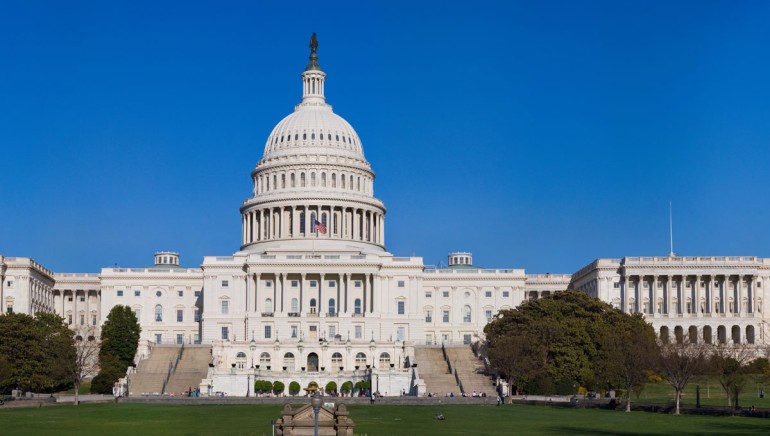U.S. Intellectual Property Plan Will Impact All Levels of Creative Community

Intellectual property protection has become an increasingly important topic in the news, as the government ramps up the role of Victoria Espinel, President Obama’s appointee to the post of Intellectual Property Enforcement Coordinator (see “BMI IPEC Filing Aids Government Intellectual Property Enforcement Strategy”). The following column, written by Copyright Alliance Executive Director Patrick Ross and originally appearing on rollcall.com, focuses on the needs of the average American working in the creative industries.
By Patrick Ross
Special to Roll Call
May 19, 2010, 12:45 p.m.
As the nation’s new intellectual property enforcement coordinator advances her historic mission of crafting the federal government’s first intellectual property strategy, a more complete picture is emerging of the kinds of people a well-crafted plan could help.
The comprehensive plan, expected this summer, is required by bipartisan legislation signed into law by former President George W. Bush and now being implemented by the Obama administration. The goal of the plan is to improve the response of numerous federal agencies charged with protecting the creative products of millions of Americans.
Critics would have you believe that protecting America’s creativity and intellectual property are dated ideas that only coddle deep-pocketed media “empires.” This is, of course, ridiculous, but inside the Beltway it all too often passes for informed policy perspective. But let’s set that aside and look at who truly benefits from strong intellectual property protection.
A deeper look at the hardworking people who really drive America’s creative economy — 11 million strong — reveals they are more likely your next-door neighbor than Rupert Murdoch. A review of comments and research compilations filed with the intellectual property enforcement coordinator’s office paints a picture the anti-copyright intelligentsia doesn’t want you to see.
Photographers, novelists, graphic artists, songwriters and music publishers are among the creators actively engaged in this debate. The American creative community — the strongest and most vibrant on the globe — includes hardworking men and women in every state. Even the Motion Picture Association of America, which doesn’t hide the fact that it represents major studios often targeted by anti-copyright crusaders, highlighted in a recent report that the U.S. film industry financially supports sole proprietorships and small entrepreneurs in all 50 states.
The average annual income earned by American workers in the creative industries is a little more than $66,000 — a solid living, above the national average, but not exactly a level where a lost sale or devaluation of work is insignificant. In other words, every sale, license or royalty check matters.
Hundreds of individual creators from all walks of life took advantage of the welcome invitation for comments in the IPEC proceeding to weigh in on the critical importance of copyright in their lives. Their stories are available to all on the White House website.
These testimonies address with personal detail the increasing burden of researching and tracking down online infringers; the false choice of copyright and creative freedom; the devaluing of creative works when they are stolen; and the potential real-life consequences of being able to pay bills, buy health insurance and save for children’s college that artists face just like any other American.
For those seeking to undermine copyright, these are inconvenient voices. It’s easier to paint a target on “big media” — though it’s unclear why any business deserves to have its products stolen — but Phyllis Dobbs, a graphic designer in Alabama, is hardly “the man.”
Consider her story: Ms. Dobbs writes to the IPEC about how she creates designs and licenses them for use on ceramic goods, garden instruments and textiles. She has been working in art and design for more than two decades, receives royalties from licensing her designs, and makes a decent living. Yet when someone steals her images, she can no longer guarantee a company licensing the work that it won’t be used somewhere else on a competing product.
And just like that, the value of her creativity and hard work is immediately and forever diminished.
Countless other voices are speaking up about the hows and whys of copyright in the digital age, not from the theoretical perspective of inside-the-Beltway intelligentsia and remote academics, but in a tangible, everyday, providing-for-a-family kind of way.
The federal government continues to have a critical role to play in enforcing copyright laws. Policy initiatives, regulatory proceedings and implementations of law are occurring across multiple agencies, from the Office of the U.S. Trade Representative to the Federal Communications Commission and the Department of Justice. For the first time, the IPEC will provide a coordinating function that will ensure consistency of purpose and facilitate efficient use of resources.
The creators across America await the IPEC’s plan in hopes it signals a renewal of the U.S. government’s commitment to jobs, exports, culture and the historic role copyright has played in allowing our creativity to flourish.
Patrick Ross is executive director of the Copyright Alliance, a nonprofit, nonpartisan educational organization dedicated to the value of copyright as an agent for creativity, jobs and growth. For more information, visit copyrightalliance.org.






Community
Connect with BMI & Professional Songwriters